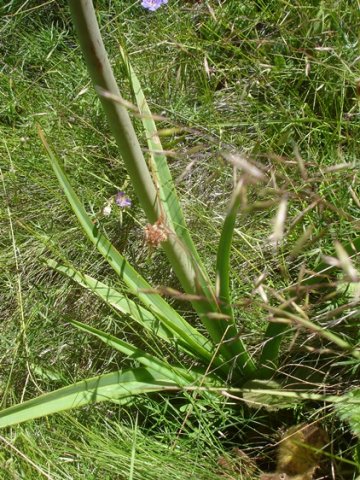Kniphofia ritualis leaves

Author: Ivan Lätti
Photographer: Judd Kirkel Welwitch
The green leaves of Kniphofia ritualis grow long and narrow in three to four ranks from the rhizome. The leaves are V-shaped in cross-section or keeled beneath, conspicuously folded in longitudinally at an angle along the blade centres. The leaves taper gradually to acutely pointed tips. The margins are finely toothed.
Growing skew as in picture comes from living on a steep mountain slope. Leaves and stems never fail to follow the light, aiming up to find it. Growing towards the light or phototropism in plants is caused by the natural plant hormone, auxin that makes the cells on the shaded side of the plant grow faster than those facing the light. This brings about the uneven elongation that causes the turning. Phototropism is a common response in plants favouring the sunlight. Various plant parts including leaf blades, petioles and stems can be phototropic.
The leaves of K. ritualis have been and possibly are being used for plaiting ropes by indigenous populations (Manning, 2009; Capon, 2005; Pooley, 1998; iNaturalist).

